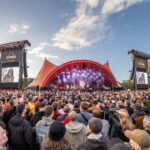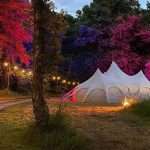Roskilde Festival – Denmark’s answer to muddy raves, excellent headliners, and a whole lot of orange. Just 19 miles west of Copenhagen (basically a quick train and a few overpriced beers away), this eight-day beast of a festival has been going since 1971 – likely before you were born, or just before your rebellious era kicked in.
We headed to Roskilde Festival 2025 to check it out for ourselves – did the sweaty tents, the midnight hotdogs, and the post-flight faff – all so we could bring you everything you need to know about Denmark’s most iconic festival.
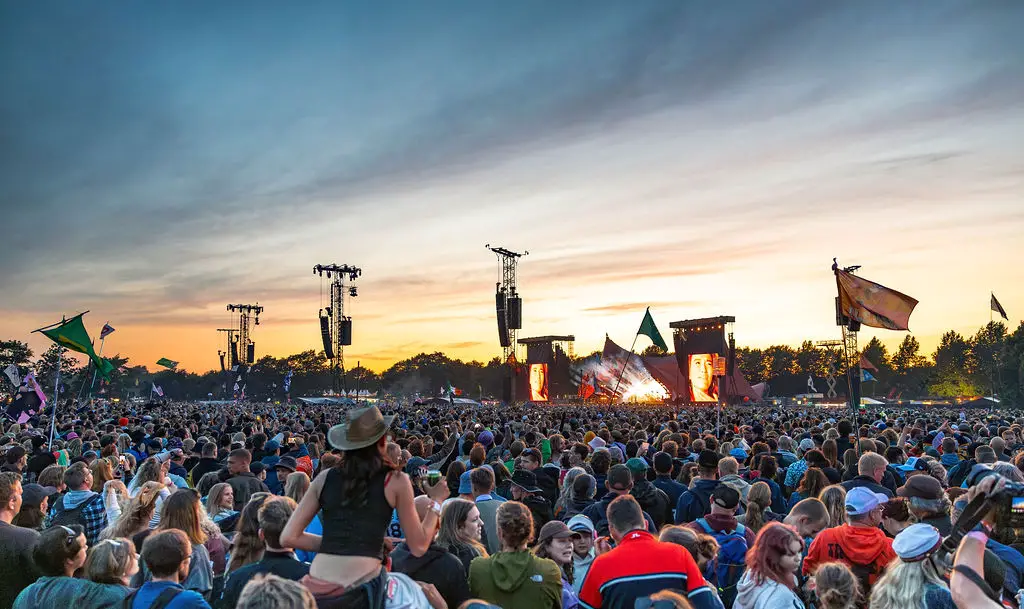
What kicked off in 1971 as Sound Festival – founded by two high school students, Mogens Sandfær and Jesper Switzer Møller, along with promoter Carl Fischer – has evolved into one of Europe’s biggest cultural blowouts. Inspired by Woodstock and the like, the original set-up was a single stage with a mashup of folk, jazz, rock, and pop. A year later, the Roskilde Foundation took over, turning it into a non-profit and setting the tone for what it is now: huge headline acts, art, activism, and the annual naked run (we’ll get to this later on).
If you’re based in the UK and a festival lover, you’ve likely ticked off Glasto, Reading, Leeds and more – so why not try something a bit more off the radar next year? Read on for everything we loved about the festival, our hacks and how best to tackle it.
Upgrade for ad free browsing.
Everything We Loved About Roskilde
First, we want to share with you exactly why Roskilde is great. Plus, we’ve included a selection of top tips below, from how to get to the front of the stage to what to check out outside of the headliners.
1. Pit Access: The Golden Wristband
This had to be our first point, as it’s such a touch: the pit. Roskilde has an inner-pit wristband system for the two biggest stages – Orange Stage and Arena – which means if you plan ahead, you can get right to the front without having to stand for hours or sacrificing your mates. There are specific pick-up points for wristbands for each artist (this year it was Gate 8 and Gate 19 at 10am), and we managed to secure wristbands for pit access for Doechii, Fontaines DC and Olivia Rodrigo, meaning we were right at the front. Once you’ve got a wristband, you’re able to walk around the festival freely right up until 15minutes before they go on stage, and then you head to the pit access gate with your wristband and you’re in – plus the pit has nice toilets right next to the stage.
Article continues below.
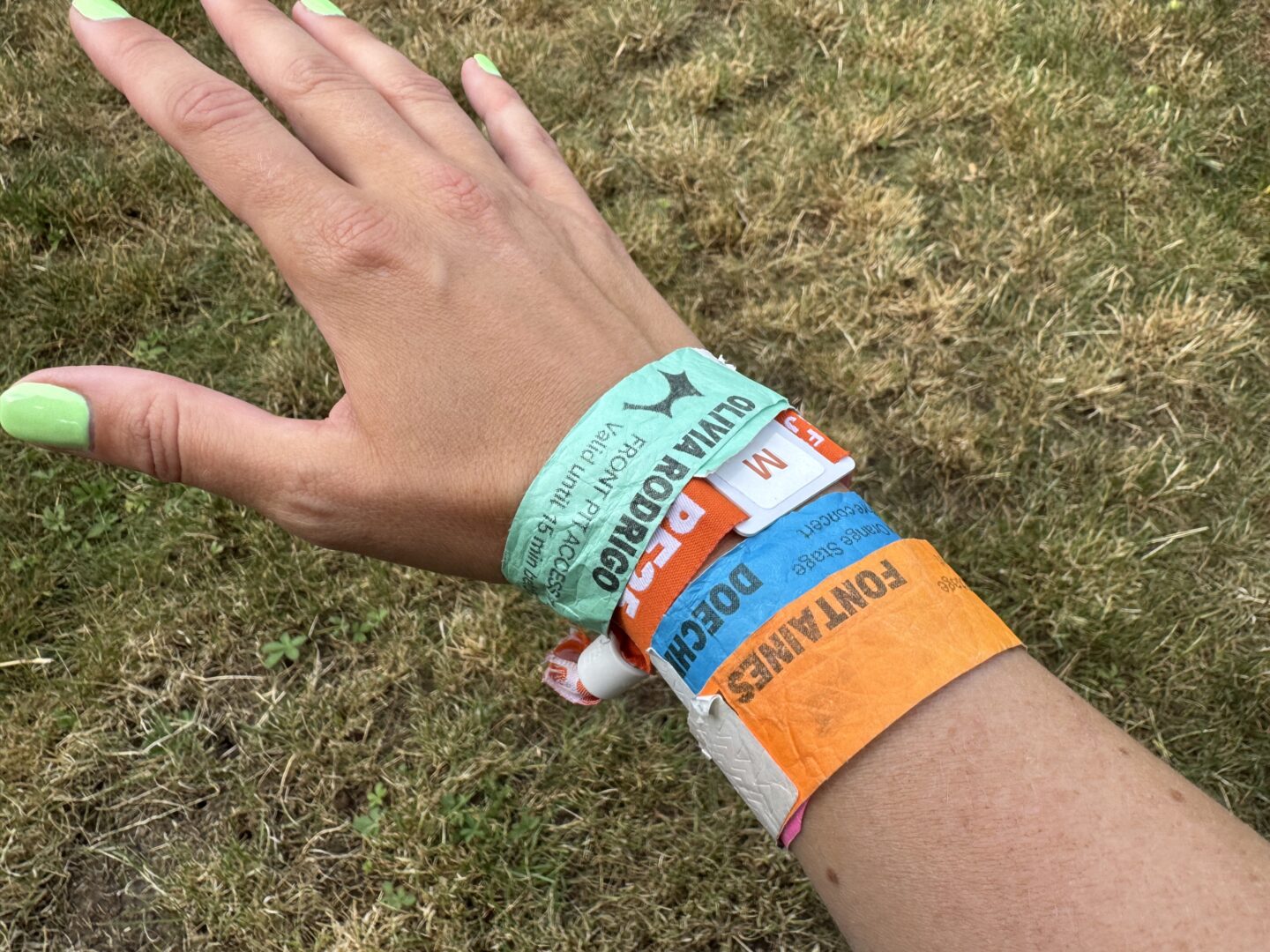
2. Toilets That Don’t Traumatise You
We have to say it, British festivals struggle to get this right: the toilets. Roskilde’s toilets are clean. There’s always toilet paper, ample sinks with soap outside, and a nifty little red and green light system that tells you if a cubicle’s free or not – no more awkward door shaking while someone’s mid-pee. Plus, they also have female urinals dotted across the festival. UK festivals, take notes.
3. Sustainability
You can’t move at Roskilde without tripping over people collecting cans, a sustainability sign, or someone serving you organic lentil curry in a recycled bowl. From plant-based food stalls to eco-friendly camping schemes, they’re genuinely trying to run one of the most sustainable festivals in the world, with an aim to become CO₂e-neutral by 2028. Plus, there are hundreds of bikes parked in rows at the entrance, used by volunteers, staff, and punters. It’s Denmark, after all – even at a festival, cycling’s the norm.
4. It’s Pretty Clean as Festivals Go
Overall, Roskilde is weirdly tidy. There’s this collective vibe that people actually care about the space, which is rare for a festival. It’s not spotless, but we did notice it was a lot cleaner than many festivals we’ve been to.
5. You’re Well Looked After
After a tragic incident in 2000 where nine men lost their lives in a crush at a Pearl Jam set at Roskilde Festival, the festival worked extremely hard at improving their crowd safety systems, which led them to become the best in the world, and now they advise other festivals. The front areas are split into manageable sections (including the pit access we mentioned above), with safety hosts in orange vests, real-time crowd monitoring, trained mental health staff, and a fully functioning emergency system. They even warn you in advance which gigs are gonna be “High Energy”. The pit access is limited, and with the wristbands, it really does feel spacious in there.
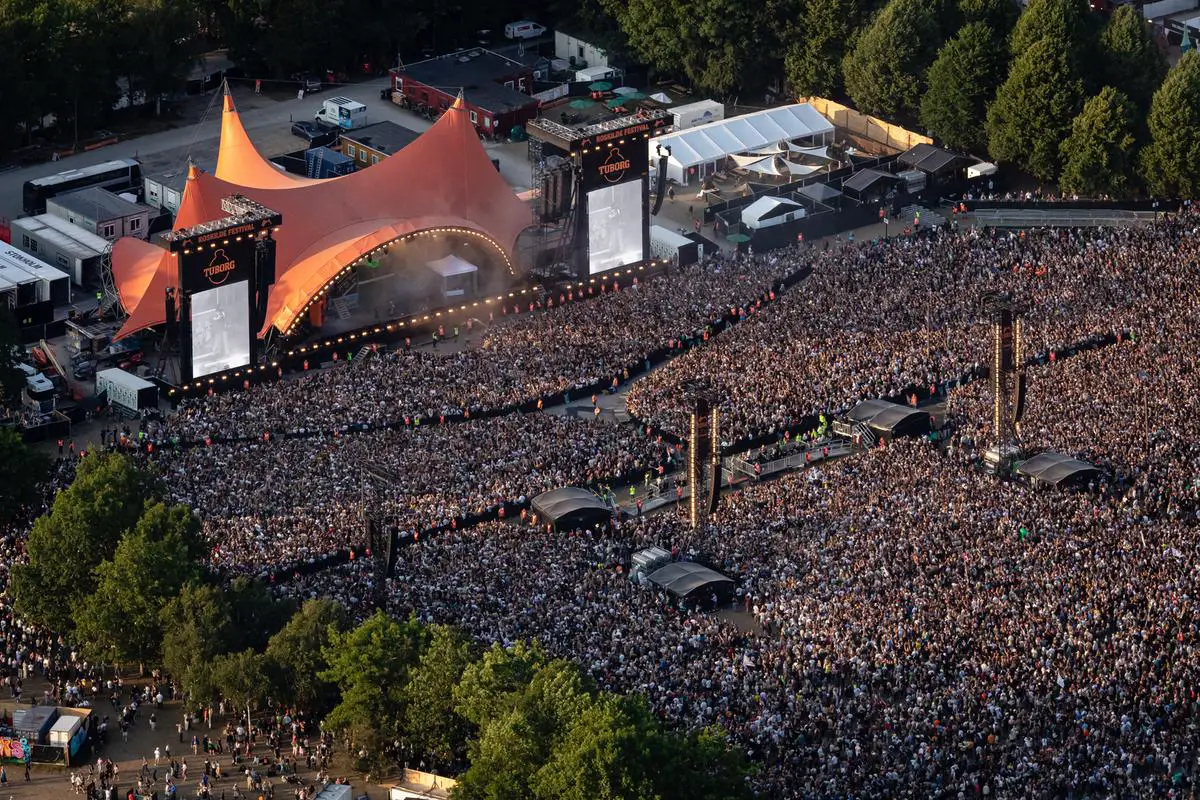
6. So. Many. Places. To. Sit.
Roskilde has benches, hammocks, lounges, swings, shaded spots, beanbags – even a champagne bar with cosy chairs on sand (we sat there a lot, obvs). We didn’t sit on the floor once which feels like luxury when you’re in the middle of a field, because let’s face it – festivals are taxing on the body (especially if you’re 30+), and it’s so much nicer chilling in a hammock amongst the festival music than having to walk back to your tent for a lie down. Whether you’re hungover, sun-fried, or just fancy lying horizontal mid-afternoon – there’s a spot for you.
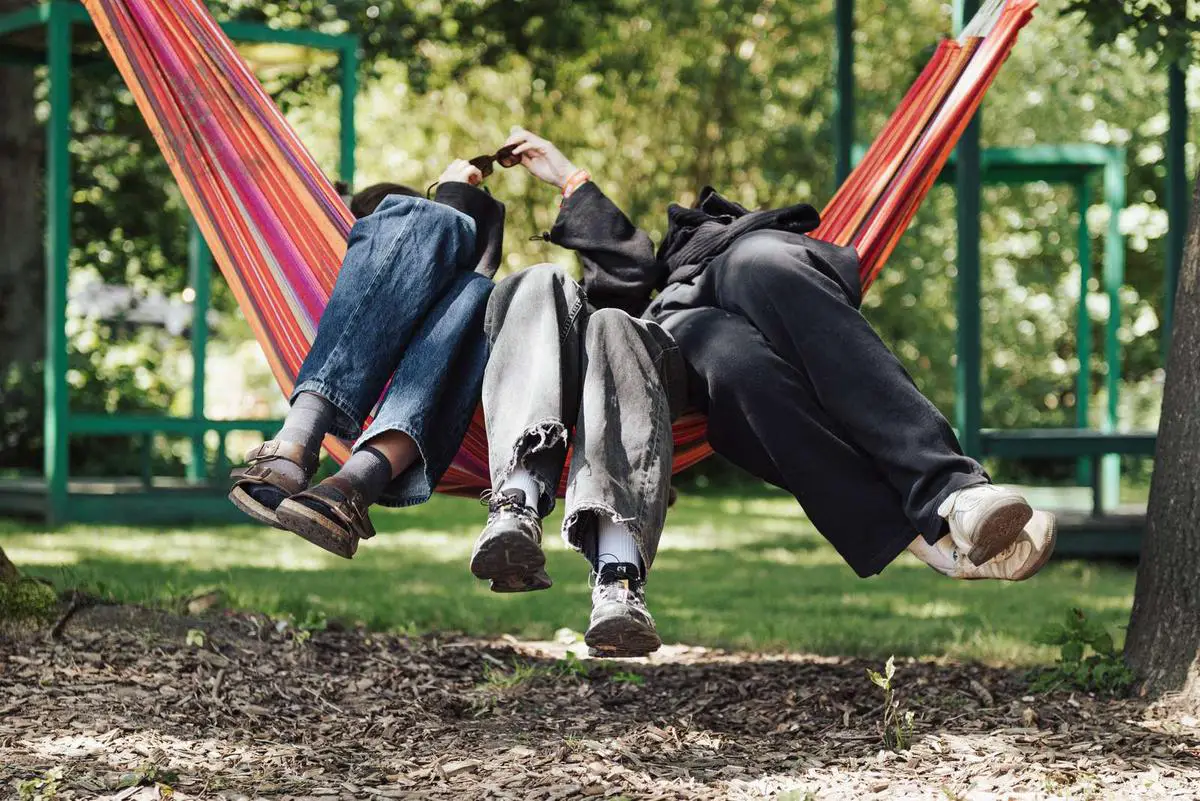
7. The Line-Up is Big
This year’s line-up was stacked: Charli xcx, Olivia Rodrigo, Doechii, Jamie XX, Stormzy, Tyla, Wet Leg, Beth Gibbons, Fontaines D.C., FKA Twigs, Beabadoobee, Lola Young – the list goes on. It’s a genuinely genre-spanning line-up, and thanks to Roskilde’s pit system, you can get right to the front easily.
There’s also a mix of stages to suit every vibe. Apollo leans into EDM, Avalon showcases global sounds, and Gloria, the smallest stage, is an intimate, dark hideaway where you’re right up close with the performers, framed by a slick visual setup. And that’s just a handful of what’s on offer.
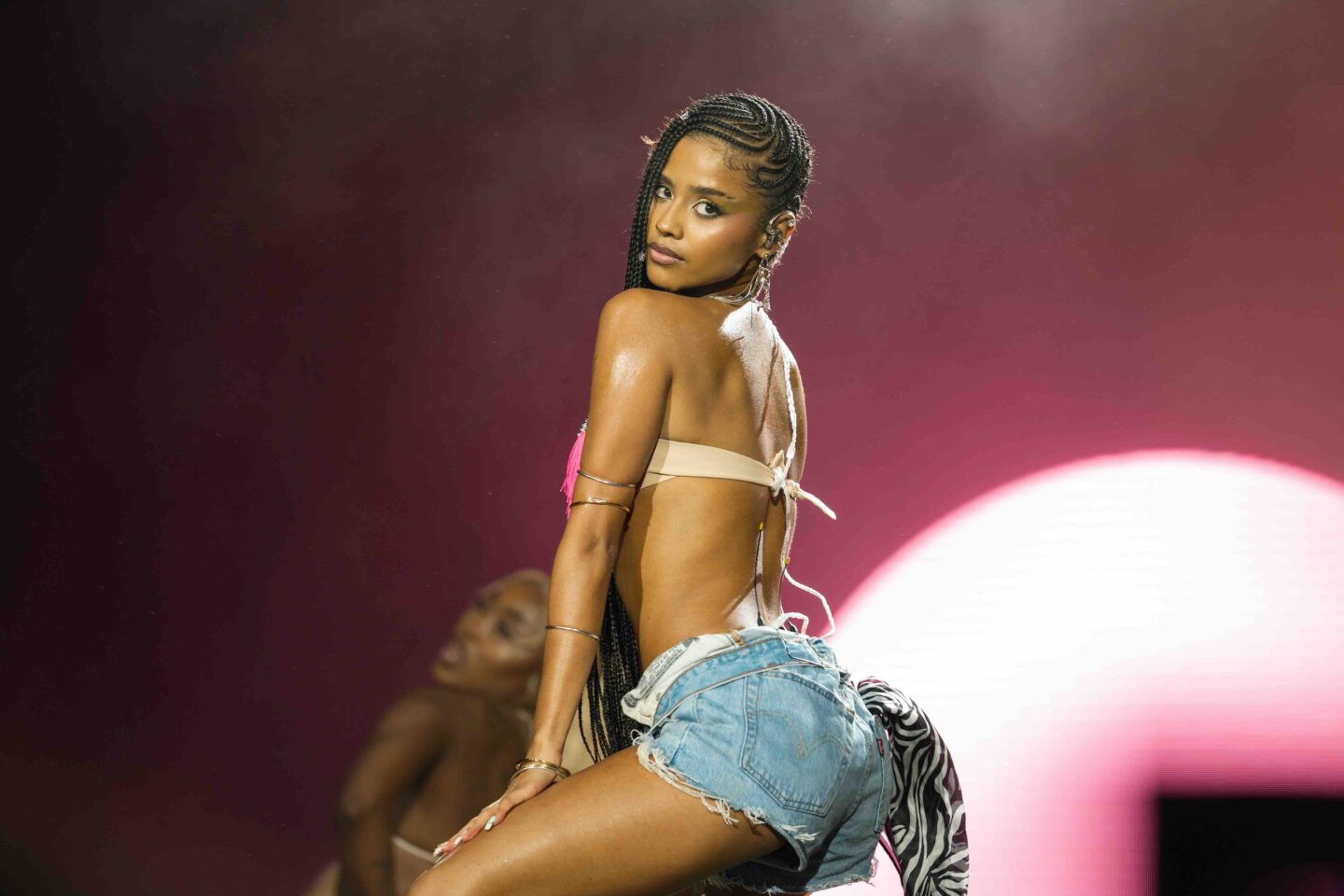

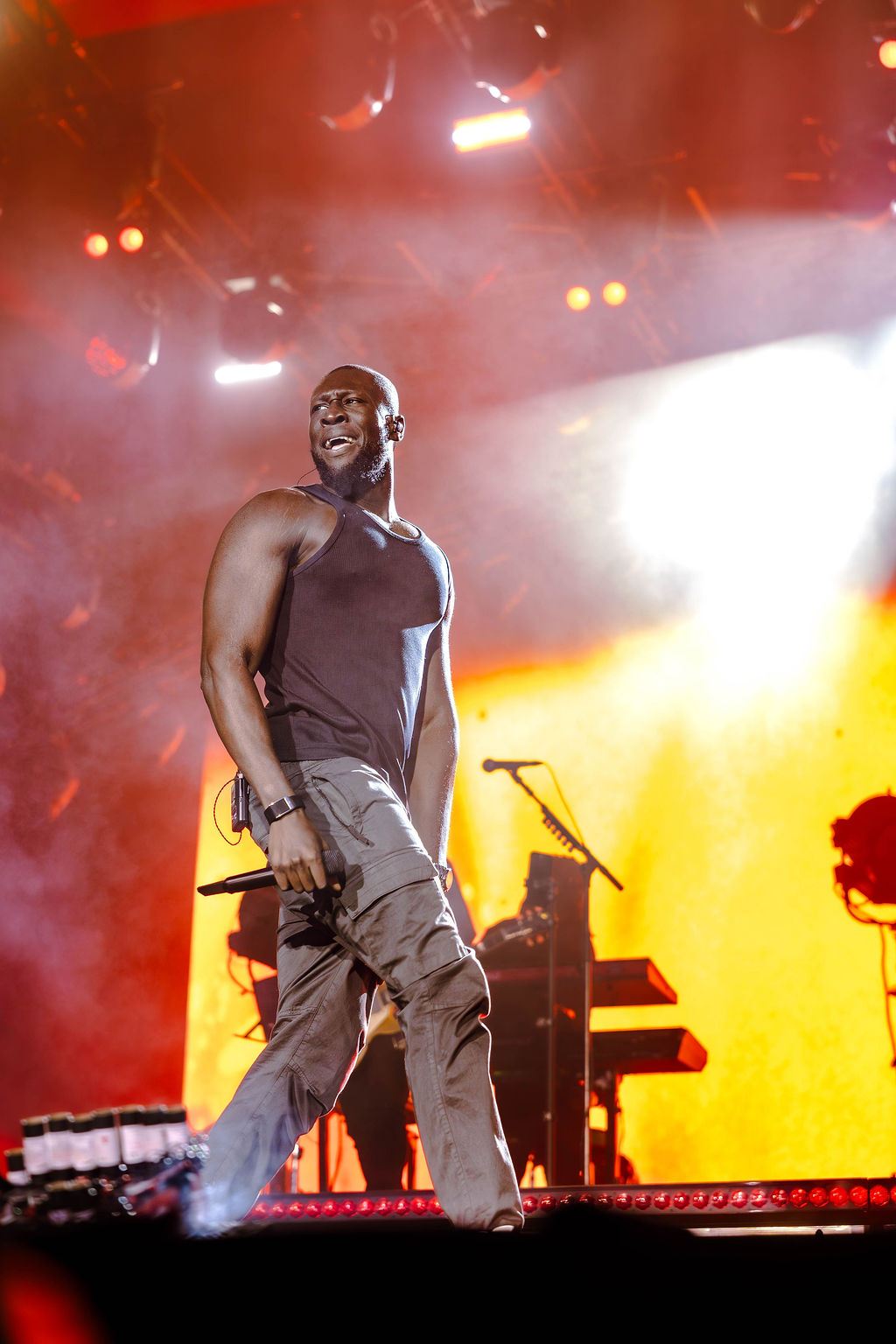

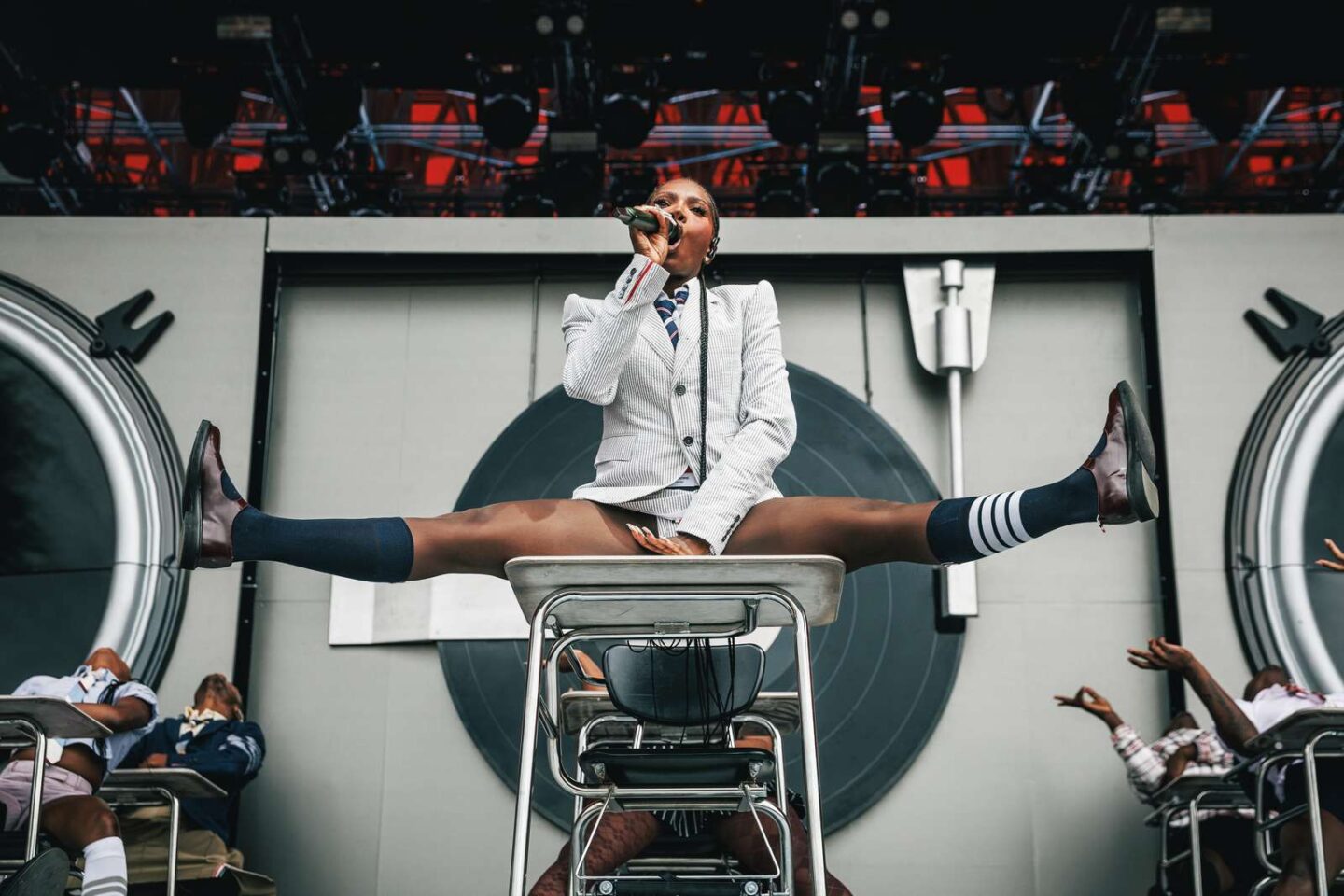
8. Less Mud
Look, we know mud is part of the festival experience, but it can be hard to contend with, and Roskilde has actual concrete paths. Not everywhere (it’s still a field, relax), but enough that your shoes might just survive the weekend. The combo of grass, gravel and solid walkways means your shoes get some respite from the mud.
9. Dream City: The DIY Festival Within a Festival
Run entirely by attendees, Dream City is a self-built rave area outside of the festival in the camping section with a bit of a Burning Man-style set-up where people trade skills and items. The area is absolutely huge, has a couple of lakes, and lots of wooden camps to party in. Festival-goers apply to design and build their own wooden camps in the lead-up to the event, and the camps from the previous years are still standing and maintained throughout the year by locals. These camps all have themes, including a fire station, Game of Thrones-inspired party dens, boats and more. They include things such as solar-powered sound systems, their own merch, foam parties, and more. It’s like a festival of its own when you wander out there, and it adds a whole other layer to the Roskilde experience.
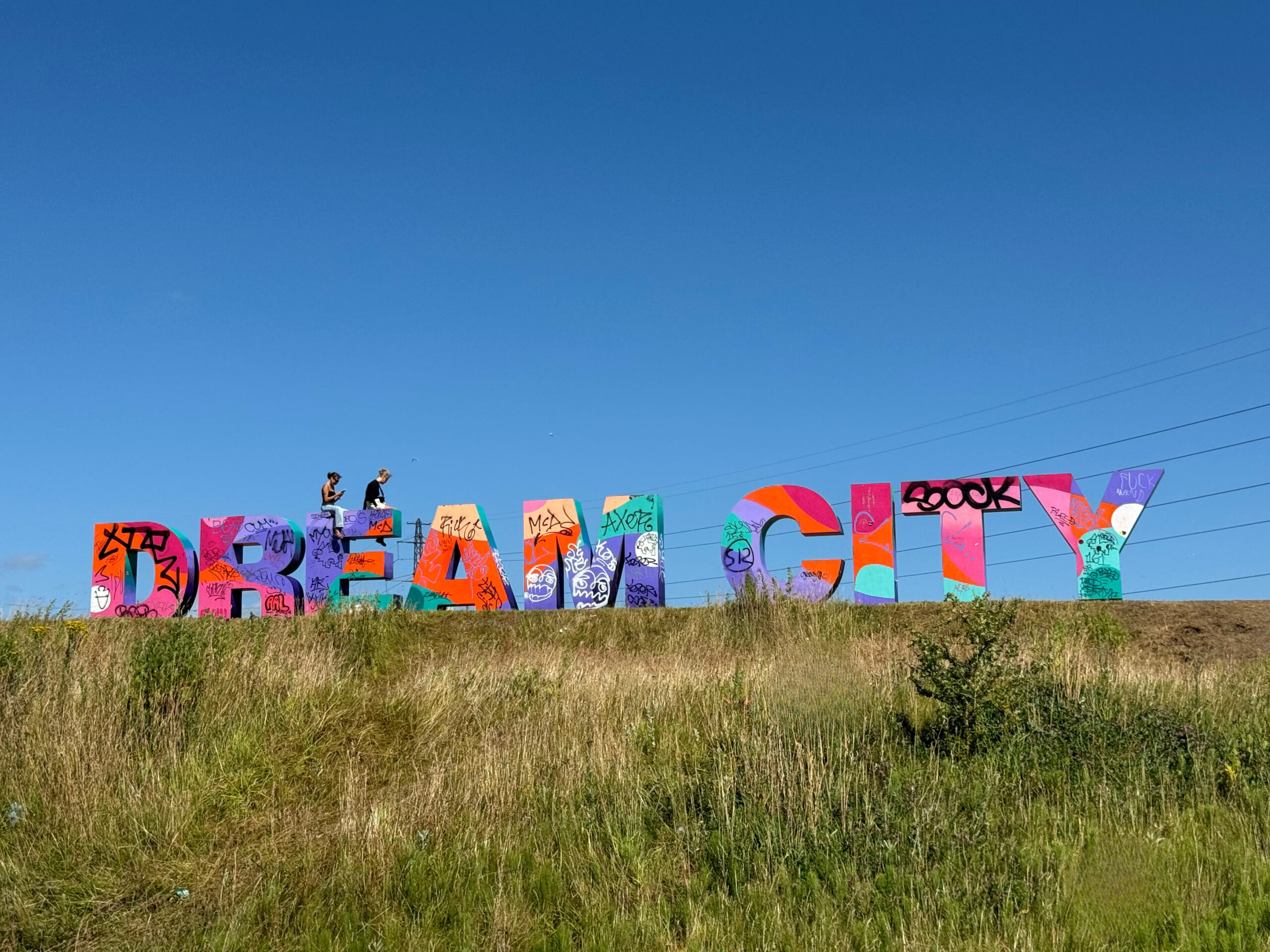
A highlight (or so we’ve heard, as we missed it – damn it) is the naked run. One of Roskilde’s most iconic unofficial traditions. Every year on Wednesday, as the festival kicks off, a bunch of bold (and very bare) festival-goers leg it through Dream City wearing nothing but dust and confidence. It’s not run by the festival, but by the volunteers that run Camp Turist Misinformation. There’s a men’s race and a women’s race, and the winners each bag a prize, plus eternal bragging rights and a lot of camera rolls they didn’t consent to.
10. It’s Run by Volunteers, and All Profits Go to Charity
Around 30,000 volunteers keep the whole festival running, from managing crowd control to being the head of a massive stage with a team of 100 to look after. The volunteers get perks like a dedicated camping zone and meals during their shifts, and you get a true sense of pride from the volunteers on how they are part of the festival.
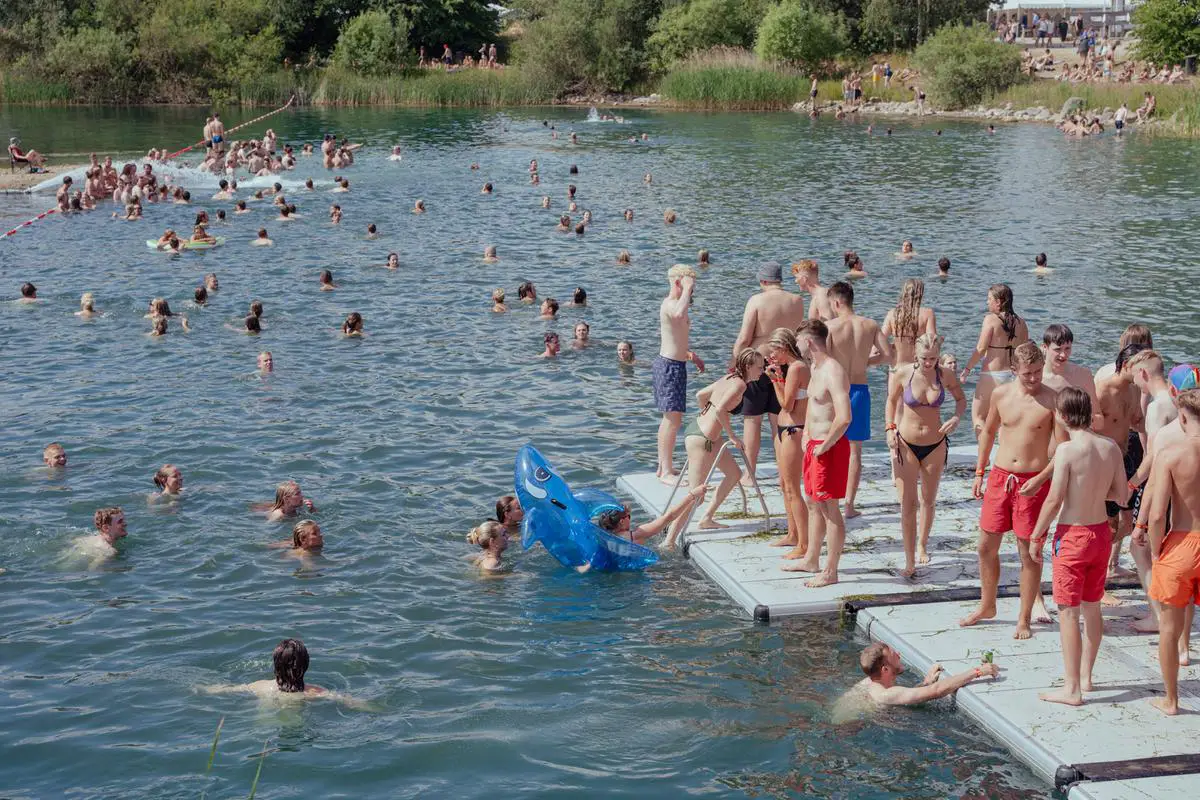
Roskilde is totally non-profit. All the money made goes straight back into humanitarian and cultural causes. Every year, an artist from the Orange Stage line-up gets to pick a charity to receive a special donation. In 2024, it was Aurora who chose The Danish Family Planning Association for their “Skærmkrop” (Screen Body) project, according to Roskilde Festival. So when you buy your ticket, your money is going to charity.
Getting to Roskilde from the UK
Fly to Copenhagen
Getting there from the UK is surprisingly easy. You can fly from all the big UK airports (London, Manchester, Edinburgh, etc.) to Copenhagen, which is only a 1.5-hour flight, give or take. If you’re quick on the booking, you can usually get return flights for under £150 with the usuals: Ryanair, EasyJet, Norwegian, etc.
Once you’ve landed, the train from Copenhagen Airport to Roskilde takes about 30 minutes and runs regularly. Or you can grab a taxi, which is also about a 30-minute transfer, but it will cost around £90-£100 and is less sustainable, so we’ll leave that one with you.
Drive to Roskilde from the UK
Driving from London to Copenhagen is 100% doable – it’s a bit of a mission, but if you fancy a proper road trip through Europe or you’re the proud owner of a campervan and want that at the festival, here’s how to do it:
Drive down to Dover and take either the Eurotunnel (Le Shuttle) or a ferry to Calais, France. From there, you can road trip your way to Denmark – usually via France, Belgium, and Germany. If you’re up for detours, you can also swing through the Netherlands en route. Things to note, you’ll need a valid passport (obviously), you need your V5C logbook for your car, UK car sticker (post-Brexit rule), a breathalyser kit (required in France – yes, really), plus in much of continental Europe it’s a legal requirement to fit headlamp beam converters (also called deflectors or adaptors). In short, make sure you do your research before you travel via road, but it could make an epic trip, especially if you incorporate stops along the way.
Where to Stay
Camping
When it comes to camping at Roskilde, you’ve got loads of options. Whether you’re going full gremlin in a £20 Argos tent or looking for something a bit more structured, there’s a setup for every level.
Camping options
- Regular Camping is where you turn up and grab your own patch of grass – no fuss, first-come, first-served, however slightly stressful considering you might have just come off a flight.
- Special Camping – That’s the slightly posher stuff you need to book in advance, like Clean Out Loud, Get A Silent Place, or Get A Late Spot.
- Community Camping focuses on shared responsibility and sustainability, but you’ve got to apply to get in.
If you have friends in Denmark who can lend you a tent, or are coming with you to the festival, then great. If not and if you are flying from the UK to Copenhagen, you might not want the hassle of flying with a tent and your camping equipment (totally possible, but good luck to you wanting to travel back with all of that at the end of the festival) so a good option to consider is the “Rent A Pitched Tent” set-up at the festival.
Campervans
You can bring a campervan to Roskilde. There’s a dedicated area for campervans, caravans and motorhomes, dedicated toilets, running water, and showers. You’re allowed to set up awnings, but tents aren’t allowed in that section.
Hotels
Roskilde Festival is often referred to as the Scandi Glasto, and it does have some Glasto feels about it; however, something that is so glaringly different to Glastonbury is that it’s walking distance from Roskilde town centre. This means a lot of festival goers do stay in hotels, hostels and Airbnbs. This is a good option if you want a more comfortable festival experience and a hot shower each morning.
Some hotel options include Scandic Hotel in Roskilde, Zleep Hotel Prindsen Roskilde, and Comwell Roskilde.
Our final tip – Give yourself a day in Copenhagen on either side if you can. The city’s an absolute must – and it’s nice to decompress somewhere with actual beds and showers before or after living your best muddy, glittery goblin life.
We hope you consider heading to Roskilde Festival next year. If you do, let us know.
Much love,
Nonchalant x
